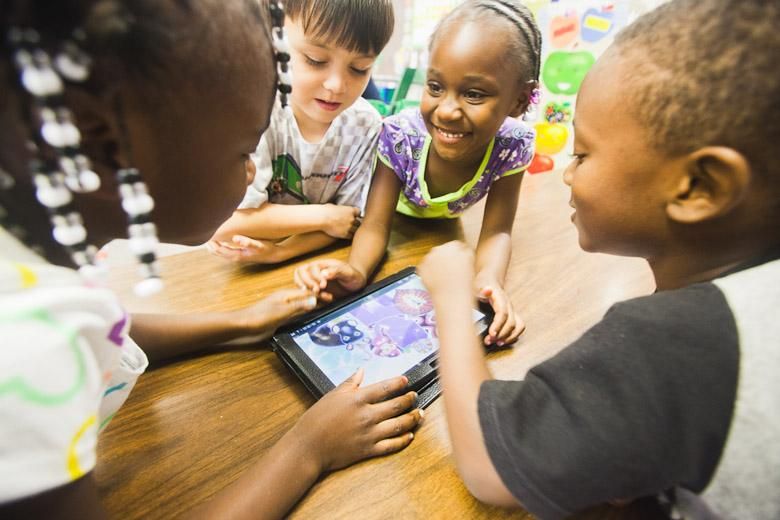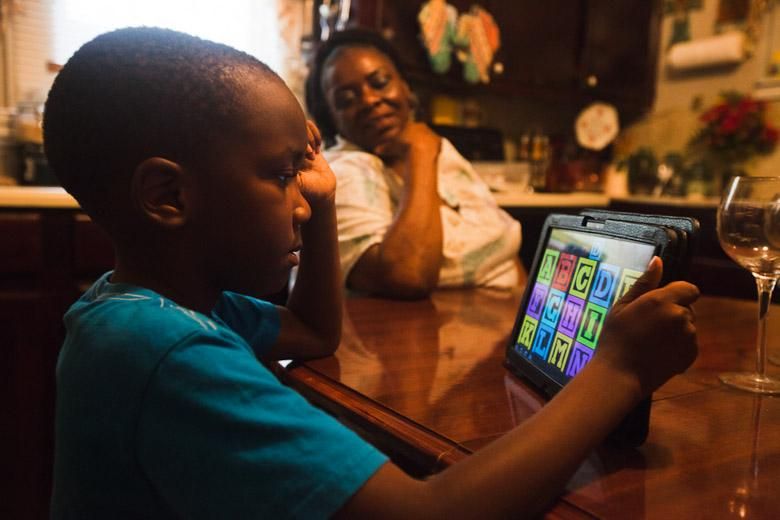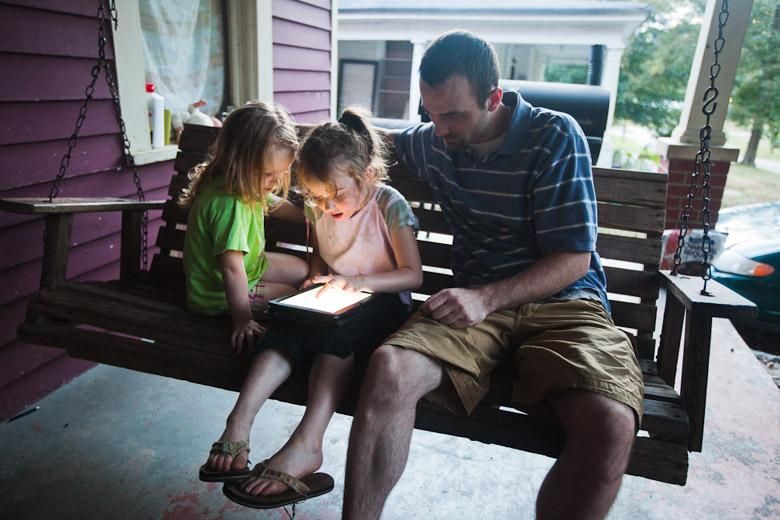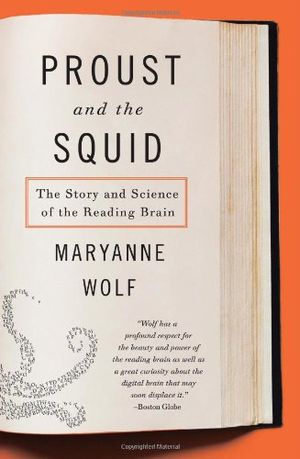Are Tablets the Way Out of Child Illiteracy?
Give them technology that they may have never seen before, and students’ brains will work wonders
/https://tf-cmsv2-smithsonianmag-media.s3.amazonaws.com/filer/56/b4/56b4caec-9ffd-4b92-9cf4-f3a3375a9431/img_8555_219.jpg)
Most of the businesses on Main Street in Roanoke, Alabama, are shuttered. Through the windows of Phillips Brothers Hardware and Steve’s Downtown Barber Shop you can see upturned chairs and faded Crimson Tide posters. The Martin Theatre remains a brick shell from the fire that gutted it in 1980, before a run of Friday the 13th. There’s a newer commercial strip on the highway that bypasses this town of 6,000, but also a sense that Roanoke has never fully revived since the Handley textile mill closed four decades ago.
Of the 1,500 students enrolled in Roanoke’s public schools, nearly 70 percent qualify for free or reduced-price lunch. Many of their parents did not progress beyond high school. David Crouse, the technology director of Roanoke City Schools, says some of his students enter kindergarten understanding about 5,000 fewer words than typical Americans their age. “It’s staggering,” he told me not long ago. “Father, mother—we have children that have no concept of that kind of vocabulary.”
One morning, Crouse took me to a kindergarten class at Knight Enloe, Roanoke’s elementary school, where students were receiving tablet computers for the first time. Their teacher, Melissa Hill, did not explain how the devices worked. She simply placed them on miniature wooden tables in front of groups ranging from two to four.
Immediately, the children began inspecting the tablets from all sides, as if they were gift-wrapped. They poked and swiped at the darkened screens. Before long, some found the power button and voiced delight as the machines sprang to life.
“How do you turn it on?” a four-year-old asked. A classmate leaned across the table to show her.
At one table, four children seemed to be hardly getting anywhere. Eight hands played tug-of-war with their shared tablet until one girl laid down the law: “All right, everybody takes a turn. Let’s take turns.”
Ms. Hill sat quietly at her desk. When students asked questions, she deflected them, saying, “You guys figure it out.”
****
Even as Roanoke struggles to leave the 20th century behind, the tablet project has brought the town to the leading edge of education. It’s an experiment, conceived by researchers at MIT and Tufts and Georgia State Universities, to determine the extent to which technology, left in the hands of children, can support reading development and literacy instruction in students with limited resources.
The Roanoke project was born out of a project launched in Africa two years ago by Tufts and Georgia State in conjunction with the One Laptop per Child organization, founded in 2007 by Nicholas Negroponte of the MIT Media Lab. One Laptop per Child, or OLPC, sought to empower students in resource-poor environments by distributing 2.4 million Internet-connected laptops in 42 developing countries. The results of the project, which ceased operations last year, are still being assessed and debated—for example, a study by the Inter-American Development Bank found no effect on test scores but some increase in cognitive skills. But in some places, it became clear that children couldn’t use some of the software because they couldn’t read, and they had no access to schools or teachers.
The research team wanted to investigate whether such children could learn to read on their own, aided only by digital devices. They delivered 40 tablets to children in two villages in Ethiopia, without instructions—a scene that must have conjured the 1980 South African comedy The Gods Must Be Crazy, in which a Kalahari bushman has his first encounter with technology, in the form of a Coke bottle fallen from the sky.
It took four minutes for the first child to power on an Android tablet. "I got mine on! I'm the lion!" he declared. After about a month, most children had learned to recite the alphabet song in English and teach themselves to write letters. This got Robin Morris, a neuropsychology researcher at Georgia State, thinking about his own backyard. “I was saying, I know whole rural environments where 30 percent of the parents don’t have any kid books at home,” Morris recalled recently. “They want their kids to learn, but they don’t have the resources to help them. Ethiopia opened our eyes to the idea that this kind of technology, if it’s done smartly, can actually, maybe have a chance of helping some of these kids who otherwise don’t have opportunities.”
In Roanoke, meanwhile, David Crouse was seeking ways to bring technology into his school district, and his inquiries led him to Morris. In contrast to Ethiopia, Roanoke had schools, and its students were familiar with technology: What would their learning curve be with the tablets? “We want self-directed learners,” Crouse says—students who can work things out alone and together.
Last September, each of Knight Enloe’s seven kindergarten classrooms received five tablets. The students would use the devices in class for around 40 minutes each day, and every child would take a tablet home one weekday afternoon.

In Ms. Hill’s class, I watched as the students, by trial and error, quickly found their way around the screen. Each tablet contained about 160 specially designed educational apps. On the home screen, they appeared simply as untitled colored squares. The students jabbed them at random, which led them down a warren of more menus of colored squares and eventually to various games, cartoons and videos. Two blond-haired boys giggled along to a piano song, snapping their fingers and swaying. A couple of students settled for a little while on an animated driving game; as they navigated a car down a road, they collected letters. The letters formed words, the words formed sentences and the sentences formed stories.
The room became a din of pings, dings and chimes as the students matched shapes, painted train cars and listened to ducks talk back to them. Perhaps more important, they did all of this socially, exploring the tablets in groups and sharing what they’d learned about the devices with others. Ms. Hill sat at her desk, organizing papers.
****
Sugata Mitra, a professor of educational technology at Newcastle University, has become an evangelist for the concept of “minimally invasive education,” based on a series of experiments he made beginning in the late 1990s. In the first trial, he carved a hole into a wall dividing his research center in Delhi from an adjacent slum and put a computer in it for children to use; the children soon taught themselves basic computer skills and a smattering of English. The “hole in the wall” experiment, as it became known, and succeeding efforts convinced Mitra that children learn best with computers, broadband and a teacher who stands out of the way. “I found that if you left them alone, working in groups, they could learn almost anything once they’ve gotten used to the fact that you can research on the Internet,” he has said. “You ask the right kind of question, then you stand back and let the learning happen.”
This regimen is intended to help the students avoid what Maryanne Wolf, director of the Center for Reading and Language Research at Tufts, calls the “black hole of American education”—the fourth grade.
American students are taught how to read in kindergarten and first grade—they learn that letters refer to sounds, sounds compose words and words express concepts. From there, students decipher the nuanced laws of the English language: They discover, for instance, that ea can be pronounced as in bread or in hearth or in at least ten other ways. They learn that muscle contains a c, even though it looks weird, and that the words muscle and muscular and musculature are related. “By the end of third grade, the working assumption of every teacher until recently was that the kids are ready to move on,” Wolf told me. “But if the kids are not fluent—if they don’t have that repertoire of what the English language demands, or the vocabulary to correspond to what they read—they are going to miss the whole boat of the educational system.”
In Roanoke, the researchers see the tablet more as an educational aid. Wolf, one of the project’s designers, claims it marks the first time anyone has tried to deploy apps curated or created expressly to stimulate the young reading brain. If this approach works, thousands of disadvantaged children in the United States—and perhaps millions more around the globe—could escape illiteracy. “That would be revolutionary,” says Wolf, whose publications include the book Proust and the Squid: The Story and Science of the Reading Brain. “It’s not just about autonomous use of a tablet, but where we can, we want to emphasize how important it is to have children working on this together, playing with this together, discovering.”
Human beings are not wired to read, says Wolf. The young brain must forge a whole new circuit for the task, drawing on the neuronal networks it inherits genetically for language, hearing, cognition and vision. The apps in the tablets distributed to Roanoke’s kindergarteners were loosely designed with that process in mind: There are apps for recognizing letters and learning the sounds associated with letters, as well as apps that address many aspects of vocabulary and language development.
One of the most engaging apps is called TinkRbook. It opens with the image of an egg. The child, intuitively, taps the egg, hatching a baby duck. A playful story of the duckling’s first day unfolds—it swims in a lake, it eats bugs—as the child acts as its caregiver. Each scene engages different literacy concepts while allowing the child to tinker with the story. He or she can combine blue and red shampoo to bathe the duck and turn the duck purple, for instance; meanwhile, the child sees the colors, sees and hears the names of the colors, and then learns how to mix colors to create new ones.
“The whole premise of the TinkRbook was, in some sense, could you make learning to read more like the way children learn about physics by playing with blocks and sand?” says Cynthia Breazeal, who directs MIT’s personal robots group, which built the app. (Wolf chose the words and sentence structure for early readers and supplied the voice.) The tablet’s interactivity allows for the learning that occurs when children play socially—the “What if you tried that?” sort of dialogue. “Try something out and see what happens,” Breazeal says, “and through the contrast of trying different things and seeing different outcomes, you start to understand the key principle or key concept underneath it. That’s directly mapped to how children learn.”
One other purpose of the TinkRbook project was to create an app that would engage parents who aren’t highly literate. “It was really about, how do you foster richer parent-child dialogues?” Breazeal says. “We know that’s absolutely critical to develop early literacy: When a mother reads her child a static book, it’s not about reading the literal words on the page. It’s all in the conversation that’s prompted by that story.”
During my morning with Roanoke’s kindergarteners, I noticed that one of them, Gregory Blackman, appeared to tune out while the two boys he sat with delighted in catchy songs and dancing animals. But when I visited his family’s one-story rental house a few miles outside downtown Roanoke, Gregory was sitting on the family’s brown living-room carpet, eyes glued to the tablet. And for the next hour, he matched shapes, recited the alphabet and giggled at cartoons. His mother, Shelley, and his two older sisters hovered nearby, offering help. A darkened TV sat in the corner.
What students do when they’re left on their own with a tablet is a bit of a mystery—for now. MIT’s software records how the children in Roanoke use their tablets: which apps they open, for how long, and in what order. (Or at least it did until some students learned how to bypass the start screen midway through the year.) So far, the data show that the students use them for an average of two hours a night. Initially, they blaze through the whole tablet, exploring dozens of apps. Eventually, they settle on a handful of favorites. The Roanoke students seem to gravitate toward academic content—sounds, letters, puzzles—especially when it is framed as a game. (The piano and coloring apps are also popular.)

Of course, the increasing role of technology in children’s lives—especially young children’s lives—has triggered a series of anxieties over their physical, intellectual, emotional and social well-being, and you don’t have to be a Luddite to be unnerved by the specter of kindergarteners left, somewhat literally, to their own devices. But current research on screen-based technologies suggests that their influence on children depends on how old the children are, what they’re doing onscreen, for how long and in what context. The American Academy of Pediatrics recommends limiting screen time for children over 2 to less than two hours a day. The National Association for the Education of Young Children and the Fred Rogers Center for Early Learning recognize the need for limits, but also say that if technology is properly deployed in early-childhood programs, “educators are positioned to improve program quality by intentionally leveraging the potential of technology and media for the benefit of every child.”
“[Students] want to be competent, and they want to learn new things—old stuff doesn’t excite them very much. And they like a challenge,” Morris says. “The good thing about the digital technology is that, based on their performance, you can increase the difficulty level and complexity of it. But it’s that child-directed learning that we’re really interested in tapping into. We want to know what attributes on which apps are going to make that happen.”
On the TinkRbook’s back end, for example, the team can track how often a student or group has “tinkered” with certain words and concepts. “A lot of the commercial [educational] apps are not at the level where we can capture that kind of data,” Morris told me. David Nunez, a MIT graduate student, has developed a “mentoring system” that keeps tabs on what a child is using across the tablet, in order to nudge him or her toward apps that address concepts that child needs exposure to—just as Amazon.com might suggest products to you based on your prior purchases. The teacher, Morris said, “will able to say, ‘Okay, Johnny’s really got his capital letters down. We need to move him into small letters, lowercase letters, and the sounds related to those letters.’ ”
Roanoke also tested the mentoring system with preschool children, having secured state money for a full-day pre-kindergarten class consisting of 18 students, a teacher and an aide. Those 18 students were a control group; they all received tablets, which they used for 20 minutes a day in class and once a week at home. Meanwhile, 16 students in a half-day class used the tablets several times a day and took them home every night. And 22 children in a third group used the tablets entirely at home.

So what did the students learn? The researchers are still analyzing the data, but preliminary results showed that among the kindergarteners, for whom data was compiled on a class-by-class basis, there was a high correlation between the time the students spent with a tablet and their speed in learning to name letters, an indicator of early-childhood literacy. What’s more, the correlation was even higher in classes whose students used the tablets more at home. Among the preschoolers, there was improvement among all three groups, but it is still unclear how much of it can be attributed to the tablet. Children who used the tablets entirely at home had fewer gains, but they didn’t spend as much time on the devices as the students in classes, and they didn’t have a teacher—or fellow students—to learn from.
“Clearly, we’d think that more engagement with a technology-supportive teacher would produce better outcomes, but how the teacher uses the tablet, and how it helps the teacher, are important questions we need to understand,” Morris said. “But how do we maximize tablet use, and how much learning can the students get who are not even coming to a traditional class? That’s the more important challenge for us, because those are frequently the more at-risk children we need to reach more effectively.”
****
Last year, Sugata Mitra won a $1 million grant from TED, the global ideas conference, for a three-year project to explore the concept of “schools in the cloud.” In these “self-organized learning environments”—five in India and two in the United Kingdom—students of various ages will be left in a room with computers and no teachers, with volunteer tutors providing help only when asked. “It is not about making learning happen, it is about letting learning happen,” Mitra says.
Maryanne Wolf is more cautious. “By no means do we know fully whether or not [tablets] are the best medium for children’s learning at all,” she says. “But we’re in a digital age, and what is imperative is that we learn what works best for different children, in what amounts, at what ages.” Students need to develop what are called “deep reading” skills—inference, analogical and deductive thinking—and that requires time and focus. She worries that a medium that insists on rapid-fire processing and partial attention may not be ideal. At the same time, she believes that well-designed learning apps can bridge that gap. “I think our 21st-century brain is going to need both kinds of cognitive processes: a biliterate brain with faster processing, but that knows when to think and read and focus deeply,” she says.
“We are not in any way, shape or form opposed to teaching,” Wolf insists. “In fact, for children who have any kind of struggle with reading, the teacher is essential to helping ‘scaffold’ them”—to piggyback off what the technology teaches them.” Computers, she says, may be heavily involved, lightly involved or not involved: “I will be the first to say we don’t know all of that yet.”
Related Books

Proust and the Squid: The Story and Science of the Reading Brain